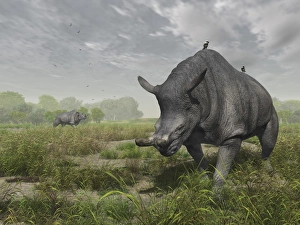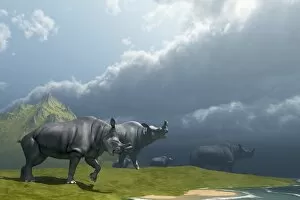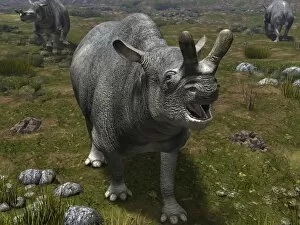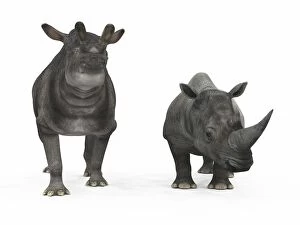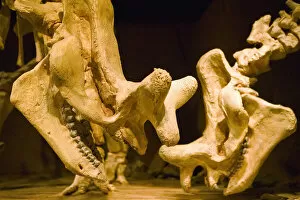Brontotheres Collection
Brontotheres, also known as Brontotherium, were magnificent creatures that roamed the lush late Eocene landscape
All Professionally Made to Order for Quick Shipping
Brontotheres, also known as Brontotherium, were magnificent creatures that roamed the lush late Eocene landscape. These rhinoceros-like mammals were a sight to behold, with their massive bodies and distinctive horned heads. In one scene, a herd of Brontotherium dinosaurs can be seen making their way to the lake for a refreshing drink. Their powerful presence commands attention as they gracefully move through the terrain. Another image captures a solitary Brontotherium standing proudly on a white background. Its imposing figure showcases its unique features and highlights its resemblance to modern-day rhinoceroses. Venturing out from its forest habitat in search of sustenance, a hungry Brontotherium embarks on an epic journey. With determination in its eyes, it traverses vast landscapes in pursuit of a satisfying meal. Comparisons between an adult Brontotherium and a modern White Rhinoceros reveal striking similarities. Despite being part of an extinct family of mammals, these ancient giants share physical traits that connect them across time. A majestic moment unfolds as we witness a lone Brontotherium walking atop a grassy hill. The gentle sway of its movements against the backdrop of nature's beauty is truly awe-inspiring. Once again isolated on white background, this time accompanied by illustrations by Wayne Ford depicting other members of the extinct mammal family - Embolotherium alongside our beloved Brontothere companions - reminding us how diverse and fascinating prehistoric life was during the Palaeozoology era. As we delve into the history books and explore fossils from this remarkable period spanning Eocene to Oligocene periods; we are captivated by these incredible creatures who once roamed our planet millions of years ago – leaving behind only remnants for us to marvel at today.

